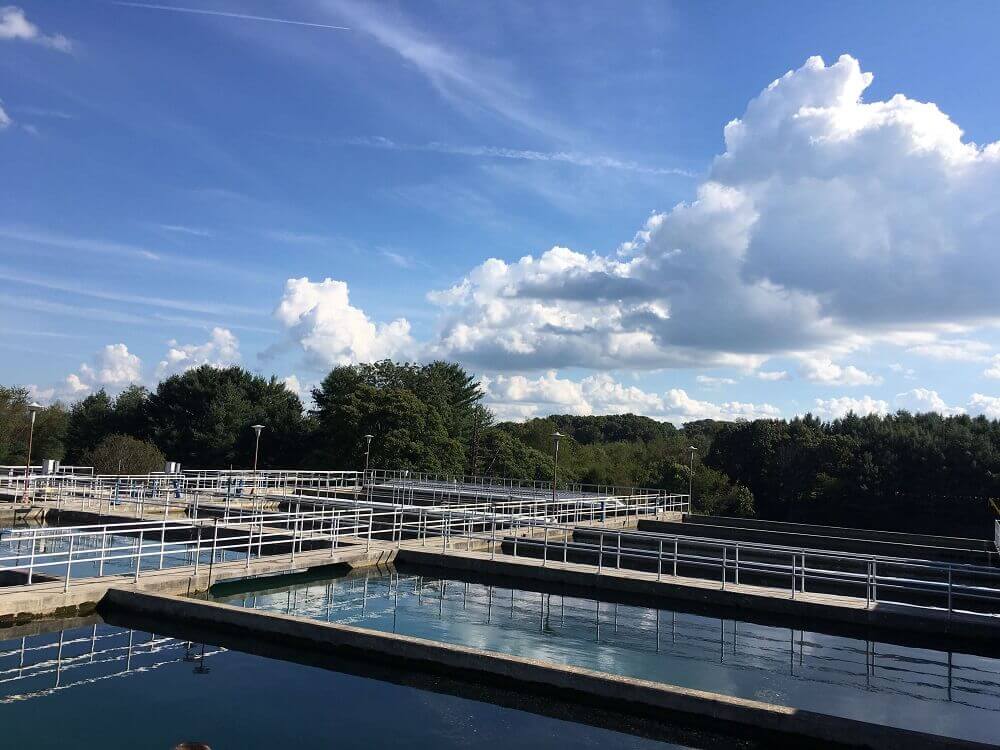According to the Canadian Infrastructure Report Card, approximately 30% of the potable water infrastructure in Canada is in “very good condition”. Canada’s potable water infrastructure is made up of linear and non-linear assets. Linear assets are characterized by local water and transmission pipes, whereas non-linear assets consist of water treatment facilities, pumping stations, and reservoirs. The majority of this infrastructure was developed and installed underground in the beginning of the 20th century with vast pipeline improvements, refurbishments, add-ons, and repairs made along the way.

A key improvement in Canada’s wastewater pipeline infrastructure includes spraying polyurea coatings to protect against damages and defects caused by constant exposure to various external and internal wastewater system elements.
Pipelines, Water Supply, and Wastewater Systems
It’s fair to say that Canadians expect their tap water to be clean and safe to consume and use for various activities such as bathing and cooking. Massive population growth over the past several decades has placed an increasingly heavy burden on water distribution and wastewater systems around the globe. Many of Canada’s water distribution and transmission pipelines are currently well past their serviceable life, but the sturdy materials used to construct them (concrete, steel, wood, etc.) have helped extend their lifespans much longer than expected. Decades old water infrastructure and pipelines can be renewed and refurbished using modern-day polyurea spray-in-place-pipe (SIPP) protective coating.
Non-revenue water (NRW), which is water that’s lost due to leaky, cracked, and defective distribution pipes, is on the rise and this is costing taxpayers across the country a great deal of money. Spraying existing pipelines in wastewater management systems with polyurea SIPP linings can help mitigate and even prevent these losses.
What Problems Do Old Pipeline Systems Have?
Buried deep underground, old pipeline systems are difficult to manage and maintain without the proper equipment. Lacking proper maintenance can lead to a host of potential issues and damages that can make potable and wastewater unsafe.
One of the biggest challenges is identifying and removing corrosion within the pipeline. Unprotected steel pipes are prone to corrosion due to the electrochemical process that involves numerous chemical processes and the flow of an electric current to move through the pipeline.
Corrosion causes portions of the pipe to deteriorate at an increasing rate over time. If neglected, mineral deposits will find their way into the corroded portions of the steel in a process known as encrustation and tuberculation. Advanced corrosion requires pipeline rehabilitation with polyurea SIPP.
What Is SIPP and CIPP?
As mentioned, many of the potable and wastewater pipelines that run across Canada were laid several decades ago and have become organically ingrained deep within the ground. Underground maintenance of these pipes comes with many challenges, but excavating these heavyset structures to replace or refurbish is a huge undertaking that would cost millions in taxpayer money, not to mention the fact that this type of project has the potential to cause more harm than good.
Applying polyurea SIPP or CIPP (cured-in-place) linings as a protective measure is a far more financially and practically feasible long-term solution. Polyurea waterproofing has been proven to be one of the most durable corrosion and chemically-resistant materials on the market. Not only does it have the ability to seal cracks, but it can also significantly increase the functionality of potable and wastewater infrastructure.
In doing so, local wastewater facilities can lower their infrastructure maintenance spending and allow municipalities to allocate those funds towards a variety of community building initiatives and infrastructure without compromising the quality and flow of the water supply.
What Are the Advantages of Polyurea SIPP/CIPP Coatings?
When it comes to pre-emptively protecting pipelines or refurbishing them to bring them back up to code, you simply can’t beat polyurea. It has all the durability and resilience that polyurethane and epoxy mixtures lack. Concrete and steel materials used to build water distribution and transmission pipelines are relentlessly exposed to abrasive and corrosive chemicals such as sulfuric acid and hydrogen sulfide, causing them to break down over time.
Polyurea coatings can help mitigate this process by providing a solid and impenetrable waterproof coating that prevents water loss within the pipelines. Other noteworthy benefits of polyurea SIPP include:
- For Pipeline Restoration, Polyurea SIPP Will Reduce Costs. Historically these pipes had to be excavated and replaced causing significant interruption to traffic, businesses, and neighbourhoods in the surrounding area. The labyrinth of varied sizes of pipes carrying water, sewage, cables, gas, etc. traversing the underground serving different purposes, makes it difficult to replace these pipes without causing damage to one or more of the neighboring pipelines. In summary, the excavation process requires a very large footprint and can be a very expensive process. With the Spray in Place Pipe (SIPP) Restoration technologies available today this disruption/damage is no longer a necessary part of maintaining our pipelines.
- Protects Pipelines Against External Environment Elements. Applying polyurea waterproof coating internally and externally will help extend the lifespan of the pipeline system and reduce the need for frequent, difficult, and expensive repairs.
- It Protects Against Corrosion. Wastewater pipelines are usually coated with polyurea protective coating during the manufacturing process, except for certain sections that are going to be welded together during the assembly process. Meanwhile, the uncoated sections are exposed to external elements and chemicals, making them more prone to damages on route to the assembly field. Since the welding process alters the material makeup of the pipes, they become more vulnerable to corrosion and other damages. Epoxy coating is usually added to the exposed portions of the pipe during the welding process, but it’s not strong enough to withstand long-term exposure to external environmental elements. Although it can be cheaper than polyurea waterproof coating, epoxy coating that’s applied on the field has a substantial failure rate by comparison.
Why Use Our Polyurea Coating Systems for Water Supply and Wastewater Pipeline Restoration
IMC Distributors is proud to serve as the exclusive distributor and provider of the ISOMAT brand of building material products in Canada. We provide a wide range of waterproof protective polyurea coating products that meet all ASTM and EN certifications. As a means of constantly striving to improve our products’ capabilities, we also perform continual testing to procure further product certifications.
When you purchase polyurea products from us, you get the ISOMAT advantage that ensures the coating is a 100% solids pure polyurea. Plus, our polyurea coatings are free of solvents and VOCs, which makes them the most environmentally sustainable water supply pipeline restoration products on the market. To learn more about our products or to place an order, please contact us today.
 Karli Logan is the Owner and President of IMC Distributors which is the exclusive partner of Nukote Coating Systems in Canada. With a B.Sc and M.Sc, as well as a demonstrated history of working across a number of industries, she has a passion to drive significant gains and benefits for IMC’s clients.
Karli Logan is the Owner and President of IMC Distributors which is the exclusive partner of Nukote Coating Systems in Canada. With a B.Sc and M.Sc, as well as a demonstrated history of working across a number of industries, she has a passion to drive significant gains and benefits for IMC’s clients.